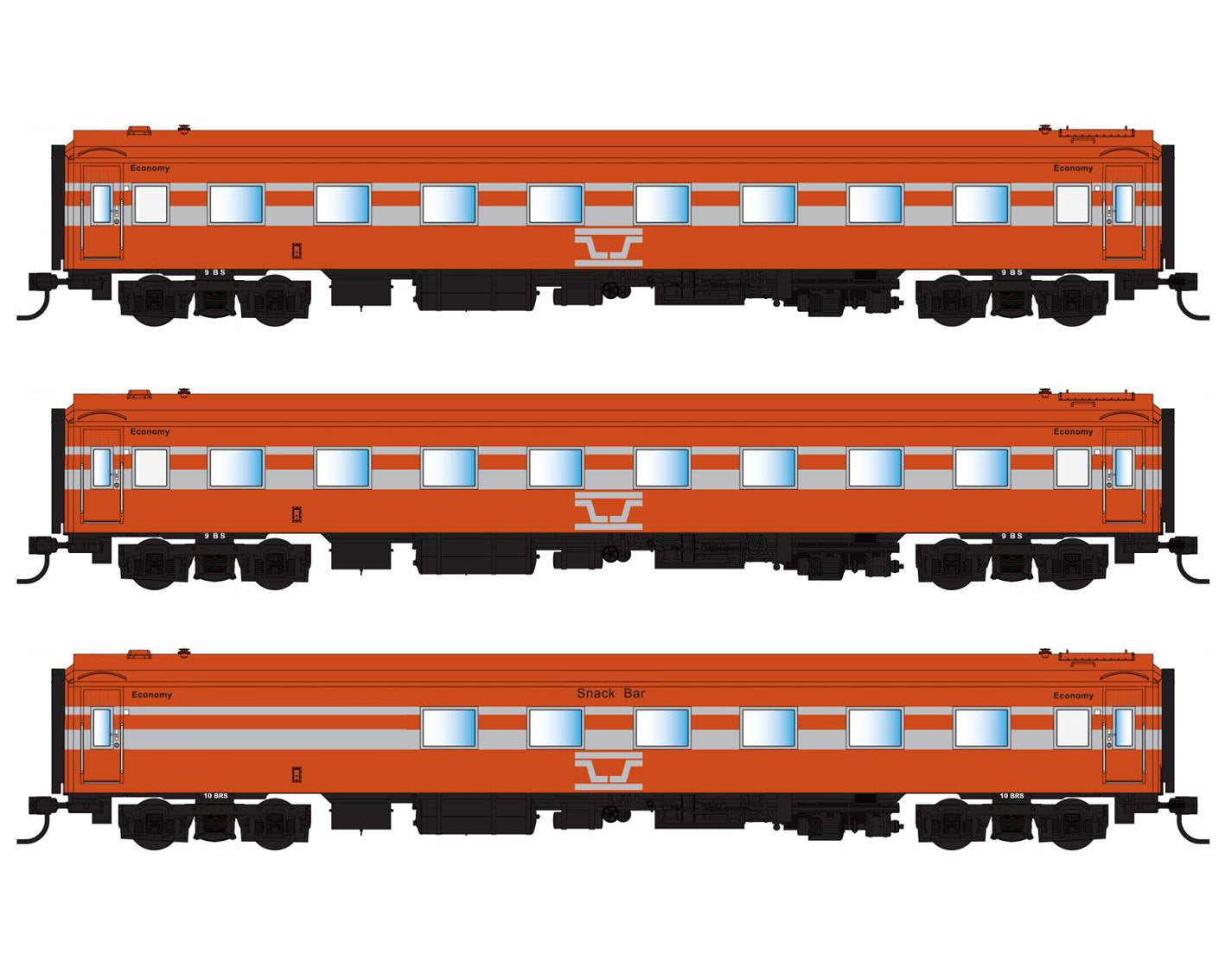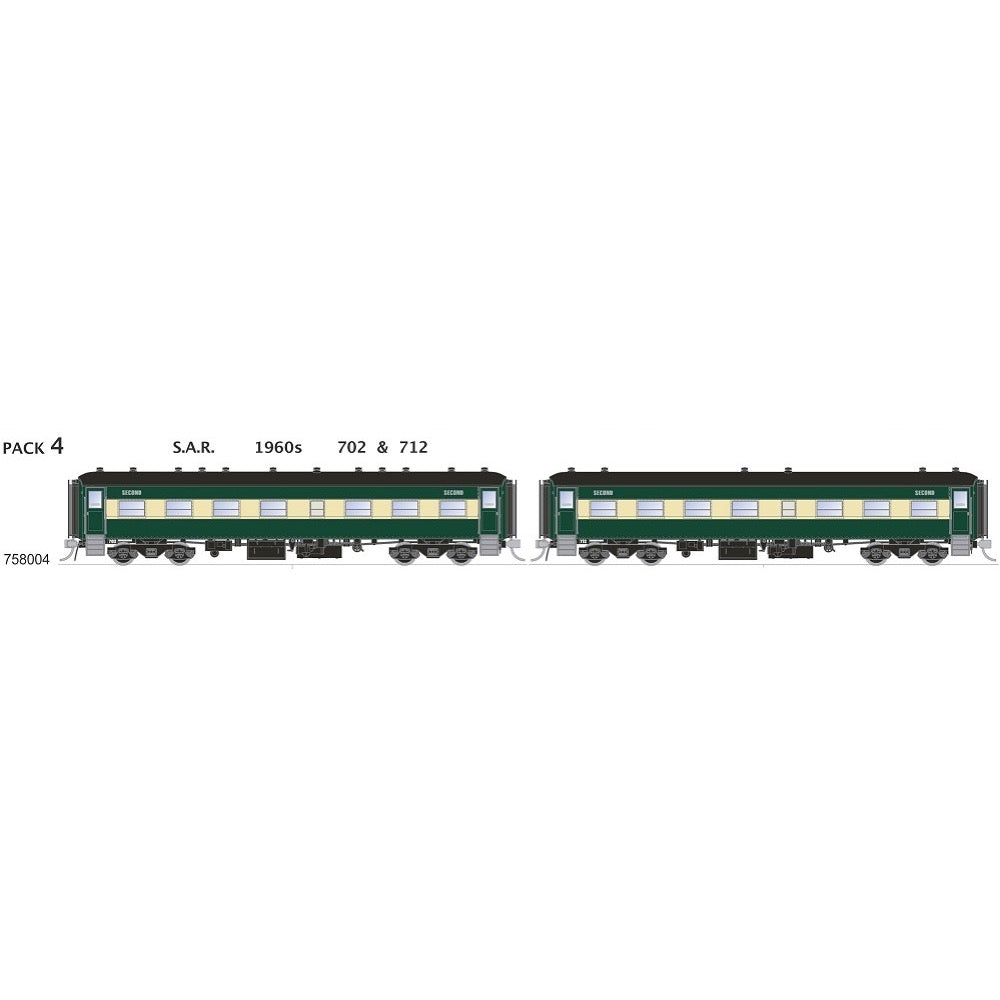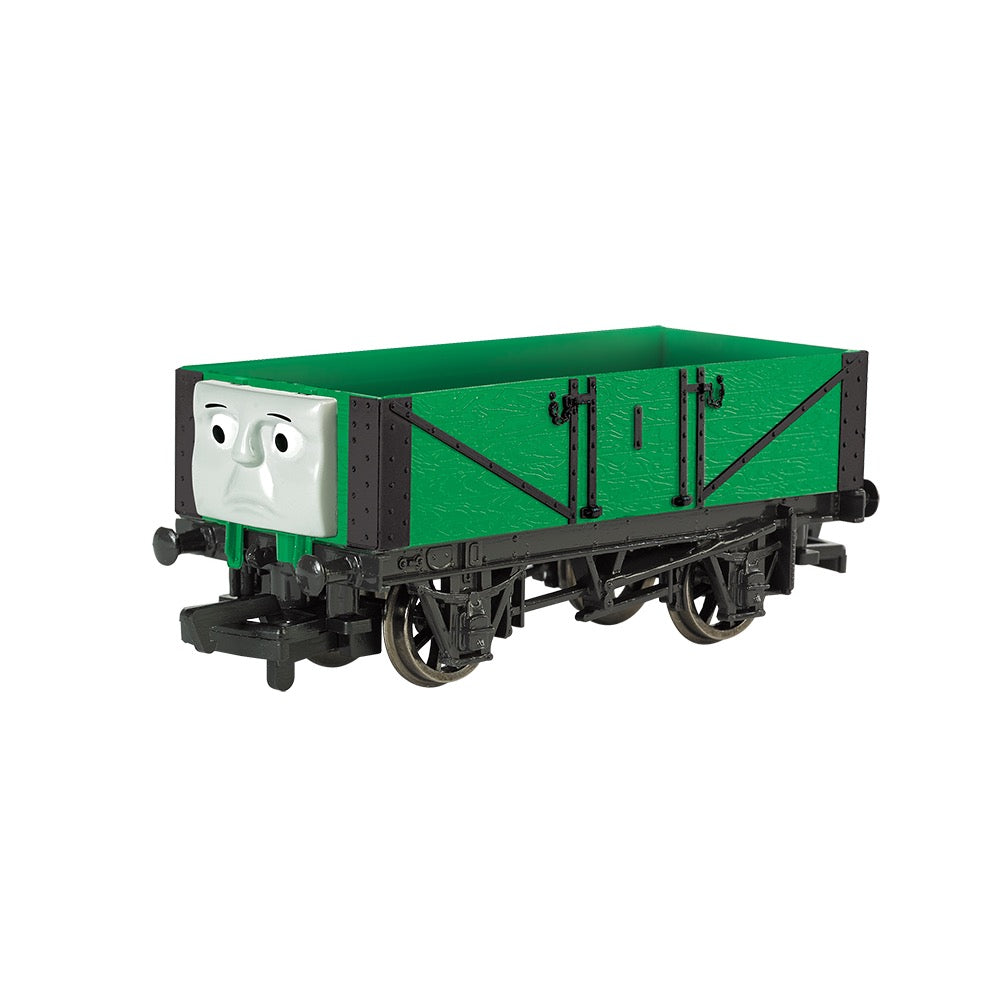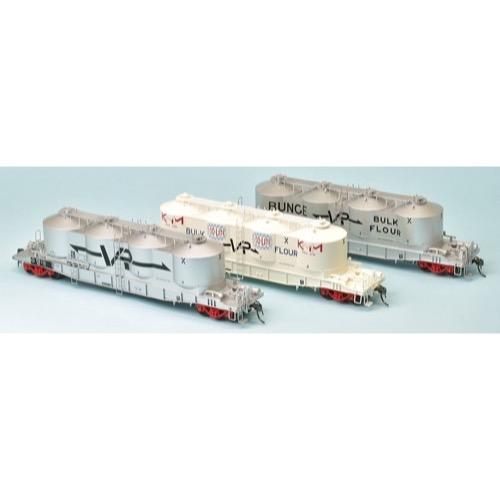
SDS Models VR FX Series 2 1970s 3 Pack C
FX / VPFX Bulk Flour Wagon
17 of these pneumatic discharge wagons were constructed between 1966 and 1971, they were numbered FX1 to 17. The first series FX 1 to 6 were built at Newport Workshops, the second series FX 7 to 17 were built at Ballarat North Workshops. The original series of wagons were designed so that two of the four hoppers were unloaded from each end. The second series differed from the first series by means of a single discharge point, via additional piping and manifold, at each end of the wagon. When the wagons were first delivered they were finished in silver with a small VR logo, later many of the series received flour company branding and some were also repainted white. Later their use was expanded to cover burnt lime (VPLX) and dried locomotive sand (VZGX).
Whilst coded FX denoting suitability for bogie exchange they were predominantly used on the broad gauge between Albury NSW and Williamstown Pier and Westall, in the mid-80s some ran on standard gauge to Enfield and Canberra.
Model Features:
- Highly detailed Ready-to-Run HO scale model
- Injection moulded high quality plastic body
- Etched metal walkways
- Full brake rigging and underfloor detail
- Semi scale metal rimmed wheels
- Genuine Kadee #158 whisker coupler
- 18” Minimum radius recommended
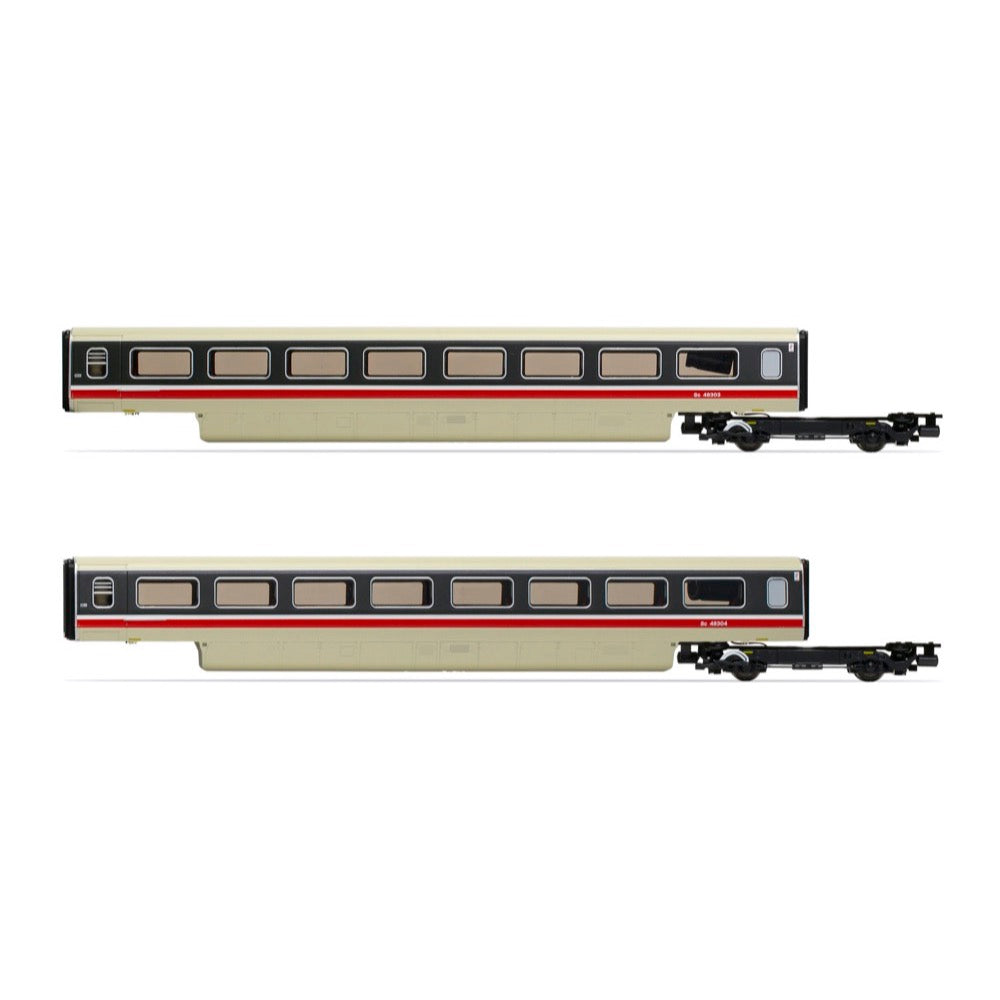
Hornby R40013 OO BR Class 370 Advanced Passenger Train 2-car TU Coach Pack
If you're on the hunt for some new coaches to add to your railway track or are eager to add a modern twist to your collection, then this coach pack will satisfy all your locomotive needs.
This pack includes the two TU coaches required in part to complete R3873 5-car Pack (Sets 370 003 and 370 004).
Includes
- 2 x Rolling Stock Coach
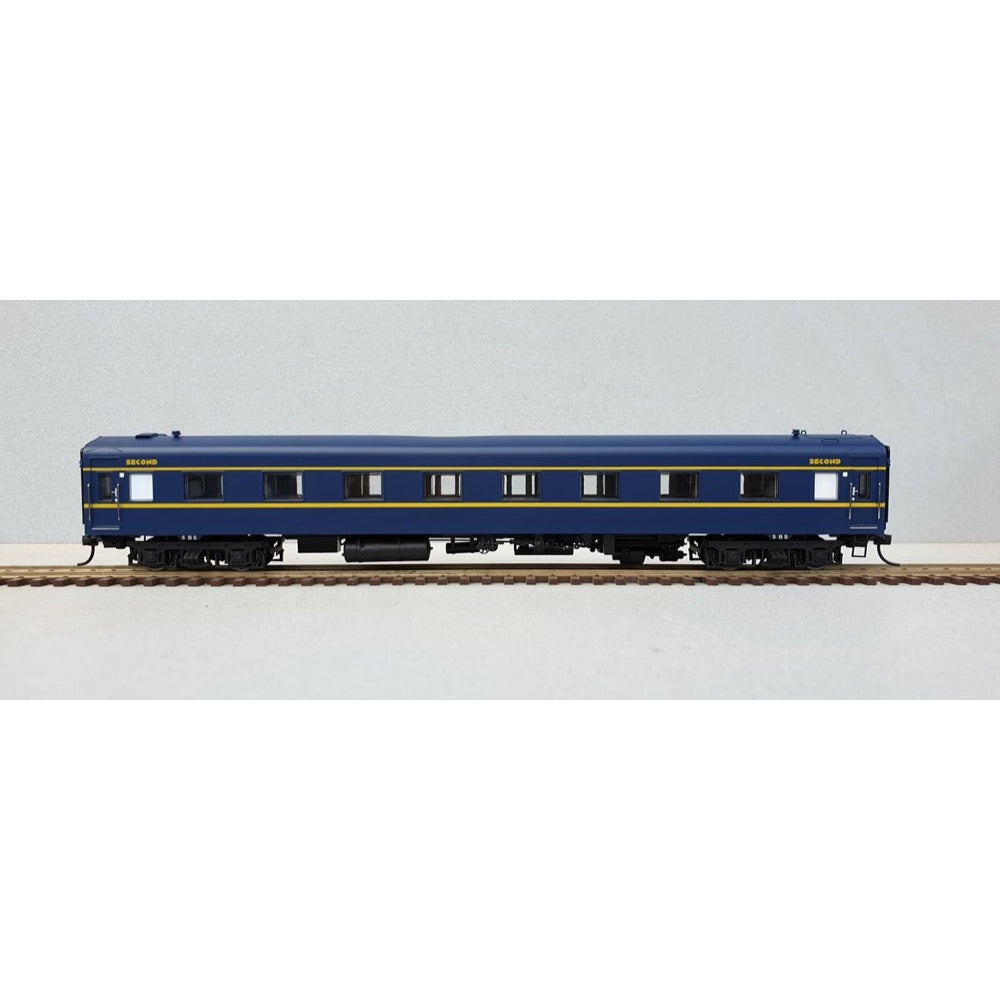
Powerline PC-404A HO 5 BS VR Blue & Gold S Type Carriage Second Art Deco
Powerline PC-404A HO 5 BS VR Blue & Gold S Type Carriage Second Art Deco

SDS Models 758011 HO SAR 700 Class Passenger Cars Pack 11 ANR 711 and 715 2 Car Pack
The South Australian Railways introduced 36 steel bodied country passenger cars between 1936 and 1941. Of these cars the last 24 built, entered service in 1940/41. They were all of a similar external appearance and the same overall length.
16 were coded 700 to 715, these were Second class centre aisle cars. 4 were coded 750 to 753, these were Composite class centre aisle cars. 4 were coded 780 to 783, these First class centre aisle cars.
Originally introduced with frameless full drop windows, they were progressively replaced with half drop chrome plated framed windows from the mid 1950s through to the very early 1960s.
Introduced in Hawthorn green and cream with black roofs up until the mid to late 1960s, when they were progressively repainted into Regal red and Silver to match the newer country stock.
In the early 1970s 4 cars were transferred to standard gauge to work between Broken Hill and Peterborough. Later in the early 1980s several cars were hired to Victorian Railways.
Many 700 series cars also saw service with West Coast Railway in Victoria, Steam Ranger in South Australia, North Rivers Railroad with Ritz Rail in Northern NSW.
Features
- Highly detailed Ready-to-Run 1/87 Scale HO gauge model
- 18” Minimum radius recommended
- Precisely tooled plastic body (ABS)
- Genuine Kadee scale head whisker coupler
- Separately applied handrails and detail parts
- Two body style options: Original 8 vent roof and later 13 vent roof
- Two window style options: Original Beclawat frameless full drop window and later Wahner framed half drop window
- Three full interior options for each class and with appropriate seat covering colour

Hornby R40163 OO GNER Mk4 Open First Coach K
Built at Metro-Cammell's Washwood Heath factory, 314 Mk4 coaches were produced between 1989 and 1992. They were built specifically for use on the newly electrified East Coast Main Line, along with hopes that a second order for the West Coast Main Line would be placed at a later date, although this second order never transpired. Mk4 coaches featured many improvements over the Mk3s such as push-button operated plug-type doors, fully sealed gangways and a designed top speed of 140mph. Much of the Mk4 design was based upon the Advanced Passenger Train. In particular, Mk4 coaches feature sides profiled to allow a tilt of up to 6° with newly fitted tilting bogies.
Mk4s entered service in 1989 and helped drive a significant increase in passenger traffic. With privatisation in 1996, all Mk4 coaches were sold to Evershot Rail Group who have since leased them out to the holder of the InterCity East Coast Franchise. The franchise was initially awarded to Great North Eastern Railway (GNER) and has since been operated by National Express East Coast, East Coast, Virgin Trains East Coast and London North Eastern Railway (LNER) owned by the Department for Transport.
Between October 2003 and November 2005 Bombardier Transportation, under contract from GNER, commenced refurbishment of the Mk4 stock, fitting new seating arrangements and introduced onboard Wi-Fi, a first for British rail services. This refurbishment programme was called 'Project Mallard' named after the Mallard steam locomotive, built in the 1930s by the London & North Eastern Railway and holder of the world speed record for steam locomotives.
Although Mk4 coaches have spent most of their lives on the ECML, there are plans to cascade them down to other lines due to the introduction of the Class 800 and Class 801 IEPs.
Specification
- Item Length - Without Packaging (cm): 33
- Item Height - Without Packaging (cm): 5
- Item Width - Without Packaging (cm): 3.5
- Item Weight - Without Packaging: 0.2
- Item Scale: 1:76 Scale 00 Gauge
- Finish: Painted
- License: No
- Colour: Blue
- Gauge: OO
- Operator: GNER
- Designer: Met Cam
- Livery: GNER
- Minimum Curve (mm): Radius 2
- Number of Parts: 1
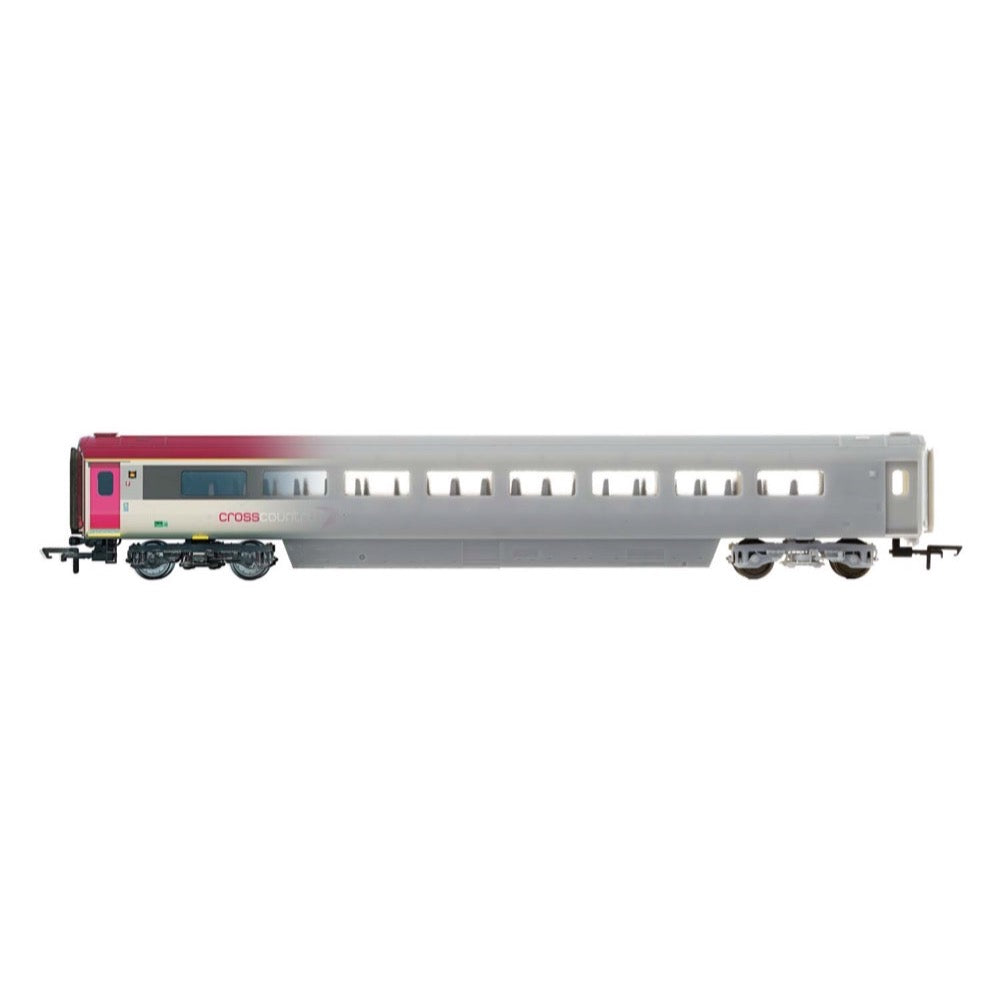
Hornby R4940B Cross Country Trains Mk3 Sliding Door TS - Era 11
The British Rail Mark 3 is a type of passenger carriage developed in response to growing competition from airlines and the car in the 1960s. A variant of the Mark 3 became the rolling stock for the High Speed Train (HST).
Originally conceived as locomotive-hauled coaching stock, the first coaches built were for the prototype HST in 1972. Production coaches entered service between 1975 and 1988, and multiple-unit designs based on the Mark 3 bodyshell continued to be built until the early 1990s. Most of the surviving fleet of the Mark 3 and its derivatives are still in revenue service on the British railway network in 2019.
Specifications
- Operator/Livery: Cross Country, Purple/Grey
- Livery Finish: Pristine
- Length: 303mm
- Period/ERA: Era 11 (2014 +)
- Type/Class: BR Mk.3 TS Trailer Standard
- Designer: Wabtec Doncaster
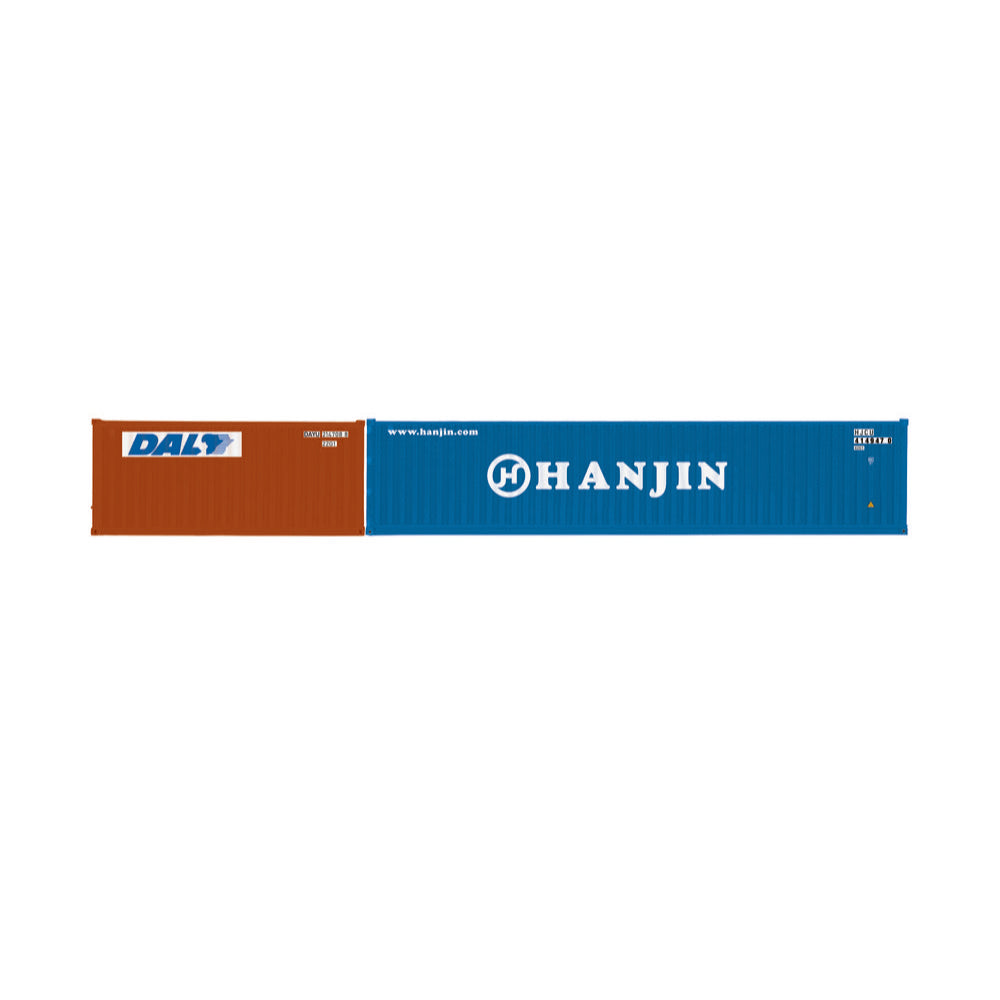
Hornby R60128 OO DAL and Hanjin Container Pack 1 2pc0ft and 1 x 40ft Containers
The standard 20-foot container or “dry van” is one of the most commonly-used containers for the shipment of goods in ocean freight along.
Includes
- 2x Rolling Stock Wagon
Technical Specifications
- Item Length - Without Packaging (cm): 16
- Item Height - Without Packaging (cm): 5
- Item Width - Without Packaging (cm): 3.5
- Item Weight - Without Packaging: 0.06
- Item Scale: 1:76 Scale
- Finish: Painted
- Color: Brown
- Gauge: 00
- Operator: CCL & Genstar
- Designer: KFA
- Livery: DAL & Hanjin
- Minimum Curve (mm): Radius 1
- Number of Parts: 2
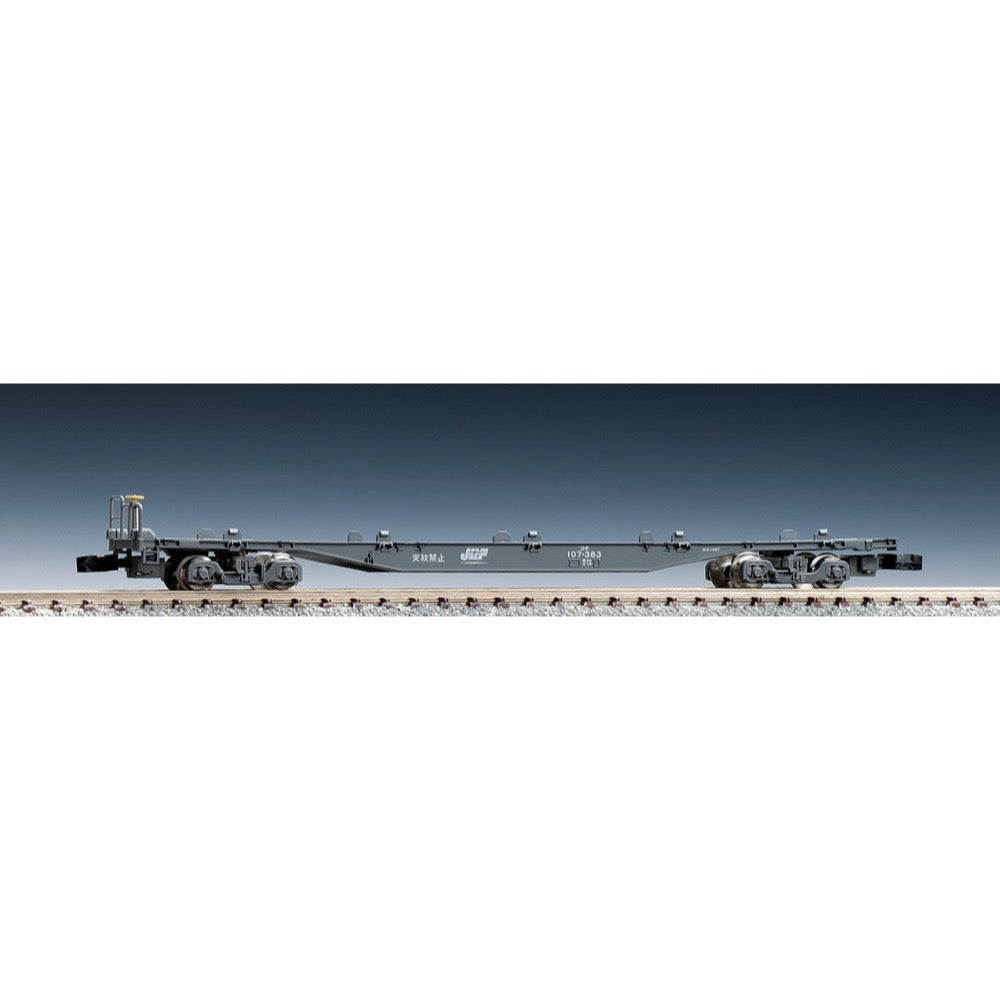
Tomix 8717 N KOKI 107 with tail light
The Koki 107 series is a marine container-compatible vehicle manufactured since 2006. The hand brake handle that was installed on the side of the car body in the conventional Koki 100 series has been changed to a deck handrail at the end of the car body in this model.
Features
- Reproduces the Koki 107 with its taillights on, which is connected to the end of freight trains heading to Hokkaido.
- Car number and JRF logo printed.
- Uses small diameter wheels.
- Transfer sheet for changing car number included.
Includes
Accessories
- Runner parts: Handle
- Transfer sheet: Vehicle number
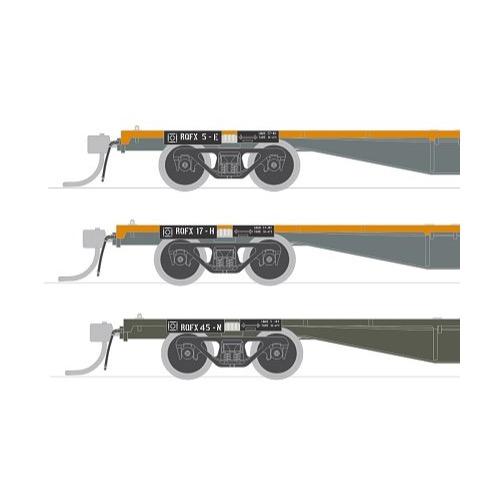
SDS Models HO National Rail RQFX Container Wagon 3 Pack A
QMX 63' CONTAINER WAGON
These containers wagons were a continuation of the basic design of the earlier VR FQX 63’ wagon, the exception being, they were built with a skeletal deck.
60 wagons were built in 1978, 1 – 40 at the VR Bendigo Workshops and 41 – 60 at the VR Newport Workshops. These were the last VR wagons to enter service prior to the adoption of the ROA 4 letter coding in 1979.
They were suitable for bogie exchange and later all went into the NRC pool in 1995, the majority were fitted with 2CM high speed bogies and became RQFY coded wagons.
Model Features:
- Highly detailed Ready-to-Run HO scale model
- Injection moulded high quality plastic body
- Diecast metal underfloor centre beam
- Full brake rigging and underfloor detail
- Semi scale 10.5mm diameter metal rimmed wheels
- Genuine Kadee scale head whisker coupler
- 18” Minimum radius recommended


